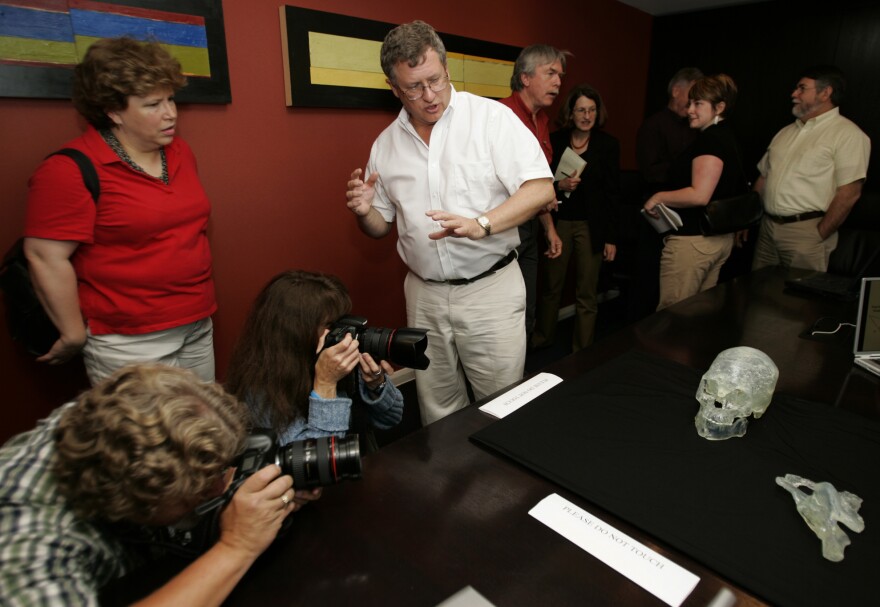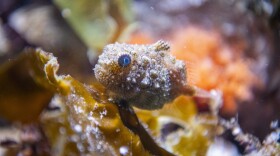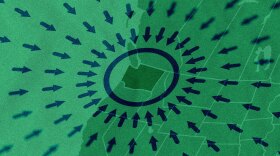For one thing, Kennewick Man – the 9,500-year-old remains found in the shallows of the Columbia River more than 16 years ago – was buff. We’re talking beefcake.
So says Doug Owsley, head of physical anthropology at the Smithsonian’s National Museum of Natural History. Owsley led the study of the ancient remains.
For nearly a decade, scientists and Northwest tribes fought bitterly over whether to bury or study the bones known as Kennewick Man. Now, after years of careful examination, scientists are releasing some of their findings to tribes at meetings this week in central Washington.
First, and important to the battles over the bones, it turns out Kennewick Man grew up on the coast and was not a direct ancestor to inland tribes.
Reading the bones
Owsley can read the bones like we might read a book. He looks for ridge lines that indicate which muscles Kennewick Man used the most and what he was doing with them.
First off – he had muscular legs like a soccer player, likely from running, trudging and hunting.
“In his leg structure he’s certainly accustomed to very rapid movement, quick movement and you can read that in those muscle ridges,” Owsley explained.
He also likely had killer arms, because he threw a spear with the aid of a lever-like tool.
Owsley says Kennewick Man was so strong in his right arm he was like a pro baseball pitcher.

A tough life
K-Man’s bones show he got today’s equivalent of a career-ending sports injury.
“If it happened to a contemporary baseball pitcher, they’d need surgery. And so it took off a piece of bone off the back side of the shoulder joint that would have been essentially loose. And I’m sure that caused great complications in his ability to throw.”
Owsley says Kennewick Man stood about 5-foot-7-inches tall and weighed about 170 pounds. And he wasn’t any stranger to pain.
The evidence shows, K-Man as he’s known in eastern Washington, got hit on the head a few times and stabbed with a basalt rock point that embedded in his hip.
‘A true messenger’
Owsley’s research includes this big revelation: Kennewick Man wasn’t from the southeast Washington region along the Columbia River where he was found. Instead, Owsley said he was from the coast.
The scientists can tell from chemical tests on tiny bits of his bones and the enamel on his teeth that he ate mostly marine animals.
“Once a tooth erupts it doesn’t change," Owsley says. "So that tiny, tiny piece of tooth enamel with just hitting it with the same sort of process, you can tell where he grew up as a child.”
Owsley and forensic artists came up with a new sculpture of what Kennewick Man looks like.
The remains known to tribes as the Ancient One, draws his ancestry from the ancient peoples of Asia, Owsley says. The scientist describes the moment he looked at the new reconstruction of Kennewick Man’s face.
“He’s so lifelike. And when you look at those eyes, those eyes have such a piercing glare. I think this man has a story to tell us. There is very little known about that time. And he’s a true messenger.”
Resources
- Owsley has a new young-adult book out with author Sally Walker. It’s called “Their Skeletons Speak.” Owsley plans to release a much larger scientific text soon.
- Burke Museum’s “Kennewick Man”
Copyright 2012 Northwest Public Radio







